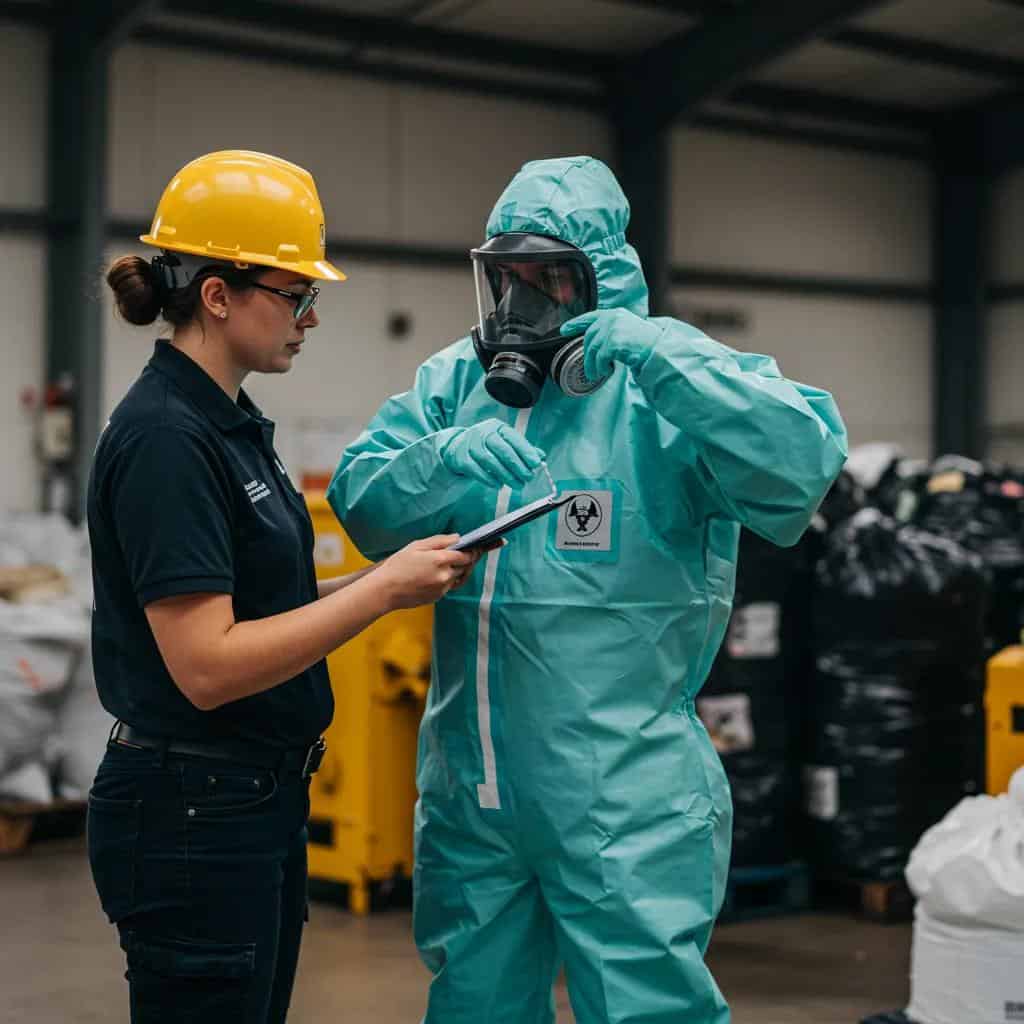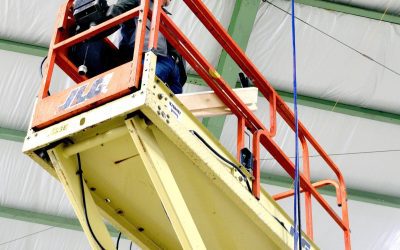HAZWOPER Training for Aerial Lift Rentals: Do Your Operators Need 8-Hour or 40-Hour Certification?

Do Aerial Lift Rentals Require 8-Hour or 40-Hour HAZWOPER Training?
What Rental Companies and Contractors Need to Know About OSHA Compliance
Why This Matters for Aerial Lift Rentals
If you’re renting out boom lifts, scissor lifts, or MEWPs for jobs near hazardous waste or chemical storage areas, your renters—or your crew—may be required to complete HAZWOPER training.
Whether you’re a rental company owner, project manager, or lift operator, understanding the difference between 8-hour and 40-hour HAZWOPER training can help:
- Prevent legal liability
- Reduce accidents
- Keep your business OSHA-compliant
What Is HAZWOPER?
HAZWOPER stands for Hazardous Waste Operations and Emergency Response. It’s an OSHA standard (29 CFR 1910.120) that applies to:
- Cleanup of hazardous substances
- Work at treatment, storage, or disposal facilities (TSDs)
- Emergency response to spills, leaks, or chemical exposure
Even if lift operators aren’t handling hazardous materials directly, working in or above those areas may still require training.
8-Hour vs. 40-Hour HAZWOPER: What’s the Difference?
- 40-Hour Training is required for workers entering hazardous sites for the first time
- 8-Hour Refresher is required yearly to maintain certification
For aerial lift rentals, the renter (employer) must assess if their operator will be exposed to hazardous waste, and ensure they have the right training.
When Does a Lift Rental Jobsite Require HAZWOPER Training?
If a rented lift will be used:
- At a hazardous waste cleanup site
- Near chemical storage or contaminated tanks
- In exclusion zones during remediation
- As part of an emergency response after a spill
Then HAZWOPER training is required for anyone operating or working from that lift.
Who Is Responsible—Rental Company or Renter?
According to OSHA, employers are responsible for ensuring their employees are properly trained. However, rental companies can help reduce liability by:
- Educating customers on HAZWOPER requirements
- Asking where the lift will be used
- Recommending the appropriate training before jobsite delivery
This proactive approach builds trust and protects your business.
What’s Covered in the 40-Hour Training?
This course prepares new workers for hazardous sites. It includes:
- PPE Levels A–D and how to use them
- Hazardous material exposure risks
- Decontamination processes
- Site air monitoring and response drills
- OSHA regulation compliance
For lift operators, this training helps prevent exposure to toxic fumes, chemicals, and unsafe air during elevated work.
What’s in the 8-Hour Refresher?
This annual course keeps certified workers updated on:
- New OSHA or EPA regulations
- Advances in PPE and rescue procedures
- Emergency response plans and real case studies
- Site-specific plan updates
Employers must ensure workers complete this refresher every 12 months.
Course Comparison for Aerial Lift Rental Environments
| Course | Duration | Main Focus | Valid For |
| 40-Hour Initial Training | 5 days | Full HAZWOPER for high-exposure work | 1 year |
| 8-Hour Refresher | 1 day | Annual update on safety rules and site response | Must repeat yearly |
Can HAZWOPER Training Be Done Online?
Yes—especially for the 8-hour refresher.
The 40-hour course can be started online, but hands-on field training is required for certification. Look for OSHA-compliant hybrid programs that include both.
Best Practices for Rental Companies
Rental companies can protect themselves and help customers by:
- Asking where and how the lift will be used
- Informing customers about possible OSHA training needs
- Providing training resources or links to certified providers
- Logging all communication related to hazardous site use
How HAZWOPER Training Protects Everyone
- Reduces injuries and chemical exposure risks
- Lowers employer and rental company liability
- Keeps job sites OSHA-compliant
- Improves customer satisfaction and trust
Frequently Asked Questions (Rental-Focused)
Are aerial lift rental companies responsible for training?
Not directly. OSHA places responsibility on the employer of the operator. However, rental companies are wise to inform customers if the job involves hazardous sites.
What if a renter uses a lift at a hazmat site without training?
That employer may face OSHA citations. If an incident occurs and it’s shown the rental company was aware of the hazardous site but didn’t act, legal liability could follow.
Can HAZWOPER certification be added to my rental contracts?
Yes. You can include a clause asking renters to confirm that all operators have completed the required HAZWOPER training before using the equipment in hazardous zones.
Where can renters get certified?
You can refer renters to:
- OSHA-authorized training centers
- Online HAZWOPER programs with hybrid options
- Safety consultants offering on-site training for contractors
